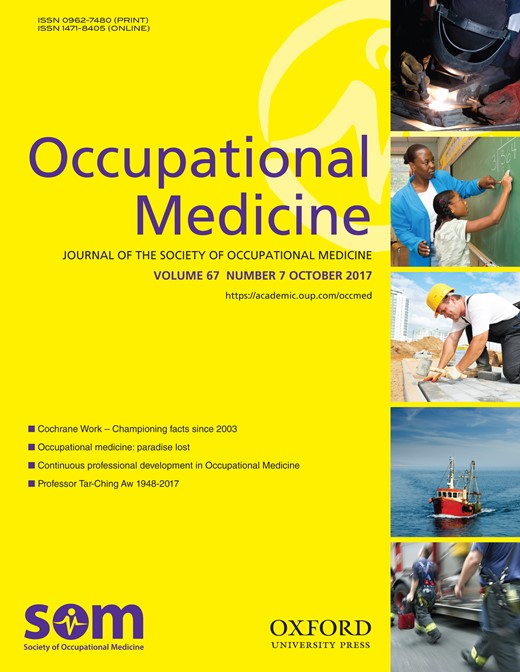-
PDF
- Split View
-
Views
-
Cite
Cite
Peter A Noone, The Holmes–Rahe Stress Inventory, Occupational Medicine, Volume 67, Issue 7, October 2017, Pages 581–582, https://doi.org/10.1093/occmed/kqx099
Close - Share Icon Share
History
In 1967, psychiatrists Thomas Holmes and Richard Rahe examined over 5000 patient’s medical records to determine whether stressful events cause illnesses. Patients ranked a list of 43 life events based on a relative score. Each event, called a Life Change Unit (LCU), had a different ‘weight’ for stress. More events mean a higher score. The higher the score, and the larger the weight of each event, the more likely the patient would become ill. Their results were published as the Social Readjustment Rating Scale (SRRS) [1], now commonly known as the Holmes and Rahe Stress Scale. Subsequent validation supported the links between stress and illness [2].
Description
The premise is that stressors can be ranked by the degree of change or upheaval they typically cause in individuals’ lives. The scale lists common stressful events and arbitrarily assigns a value of 50 ‘LCUs’ to the stress caused by marriage. Interpretation of the overall score is difficult because of the large interpersonal differences in individual’s ability to cope and their particular reactions to stress.
A total of ≤150 is good, suggesting a low level of stress and a low probability of developing a stress-related disorder. If the score is ≥300, statistically there is an almost 80% chance of getting ill in the next 2 years. If the score is ≥150 to ≥299, the chances are about 50%. At <150, ~30% chance of illness. This scale seems to suggest that change in life requires an effort to adapt and then an effort to regain stability.
Items
Although the scale was originally developed and validated on males, it provides useful results for both male and female subjects. There is inherent variation because stress caused by a particular stressor varies greatly from one person to the next because of the variability in the individual’s circumstances, interpretation, goals, personality, values coping strategy and resources. Although the scale is well researched, the values are only a rough approximation at best [1,3]. The 43 ‘life events’ and the LCU score that was allocated to them after all the subjects’ scores had been analysed are mean values, standardized for age, sex, race, religion etc. Each loosely worded category can have a wide range of possible interpretations. The chosen ‘life changes’ reflect life, values and the work and social environment as it existed for a very different generation.
Validity
Rahe validated the scale in 1970 as a predictor of illness [4] using 2500 US sailors rating scores of ‘life events’ over the previous 6 months. Over the subsequent 6 months, detailed records were kept of the sailors’ health. The +0.118 correlation between stress scale scores and illness supported a link between life events and illness [5], including visits to medical clinics, or medical dropouts from underwater demolitions training. The scale was also assessed against different populations within the USA (African, Mexican and white American groups) [6] and cross-culturally, comparing Japanese [7] and Malaysian [8] with American populations. Malaysians exhibited different attitudes implying different stress at the same score. This suggests weakness of the SRRS in certain areas, with different cultural group reactions to different life events. In 1978 Gerst tested SRRS reliability and found that rank ordering remained extremely consistent both for healthy adults (r = 0.96–0.89) and patients (r = 0.91–0.70) [9].
Conclusion
The SRRS is surprisingly consistent despite the cross-cultural differences one would expect. Most people experience major life events infrequently hence a better measure might look at the stresses and strains of daily life [10].
Source
The questionnaire is free to use and downloadable [1].
References



